72–74 Church Street, Inverness, Highland, IV1 1EN
Known in old charters as The King’s Highway to the North, Church Street was first referred to by that name in 1240. In Pevsner’s guide, this site (numbers 72–74) was built c1840. In 1860, the building was the Northern Hotel and it became the Queen’s Hotel in the 1880s/90s. It acquired its present name – Cummings Hotel – from the family which owned it in the first half of the 20th century.
Text about The King’s Highway.

The text reads: The name of this Wetherspoon pub recalls an earlier title for Church Street, first recorded in 1240. The building itself was constructed around 1840, and has had several previous names. It was the Northern Hotel in 1860, the Queen’s Hotel in the late 19th century, and more recently Cummings Hotel.
Immediately next door to this building stands Bow Court. This early 18th century block was restored in 1972, and a plaque records that it was a gift from Lady Drummuir to the Incorporated Trades and Masons of Inverness.
In 1746, Lady Drummer’s own house, further down Church Street, was used by Prince Charles Edward Stuart. After the battle at Culloden, she had provided accommodation for the Duke of Cumberland, son of George II. She later remarked “I had twa king’s bairns living with me in my time, and may I never see another!”
Bow Court was once the residence of the Rector of the Grammar School. This was housed in Dunbar’s Hospital on the corner of School Lane. The building was named after Provost Alexander Dunbar, who bequeathed it in 1692 as a hospital for the poor.
Almost opposite here is Abertarff House, once of Inverness’ oldest buildings. It was constructed in 1593 as the town house of the Fraser family of Lovat.
Right: The King’s Roads
Above: left, Bow Court, right, Cummings Hotel
Left: Simon, Lord Lovat.
Text about the history of Inverness.
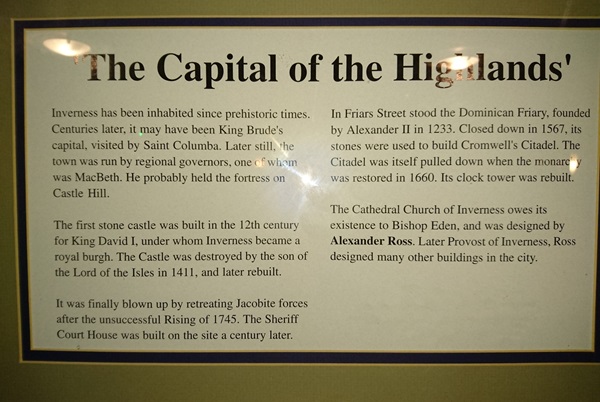
The text reads: Inverness has been inhabited since prehistoric times. Centuries later, it may have been King Brude’s capital, visited by Columba. Later still, the town was run by regional governors, one of whom was Macbeth. He probably held the fortress on Castle Hill.
The first stone castle was built in the 12th century for King David I, under whom Inverness became a Royal Burgh. The castle was destroyed by the son of the Lord of the Isles in 1411, and later rebuilt.
It was finally blown up by retreating Jacobite forces after the unsuccessful Rising of 1745. The Sherriff Court House and was built on the site a century later.
In Friars Street stood the Dominican Friary, founded by Alexander II in 1233. Closed down in 1567, its stones were used to build Cromwell’s Citadel. The citadel was itself pulled down when the monarchy was restored in 1660. Its clock tower was rebuilt.
The Cathedral Church of Inverness owes its existence to Bishop Eden, and was designed by Alexander Ross. Later Provost of Inverness, Ross designed many other buildings in the city.
Text about Culloden.
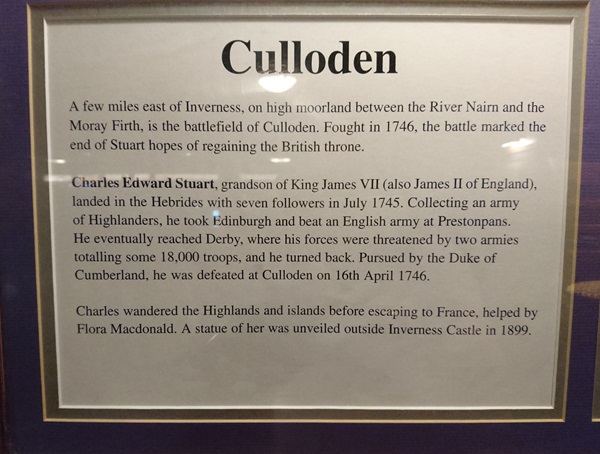
The text reads: A few miles east of Inverness, on high moorland between the River Nairn and the Moray Firth, is the battlefield of Culloden. Fought in 1746, the battle marked the end of Charles Stuart’s hopes of regaining the British throne.
Charles Edward Stuart, grandson of King James VII (also James II of England), landed in the Hebrides with seven followers in July 1745. Collecting an army of Highlanders, he took Edinburgh and beat an English army at Prestonpans. He eventually reached Derby, where his forced were threatened by two armies totalling some 18,000 troops, and he turned back. Pursued by the Duke of Cumberland, he was defeated at Culloden on 16 April 1746.
Charles wandered the Highlands and islands before escaping to France, helped by Flora Macdonald. A statue of her was unveiled outside Inverness Castle in 1899.
Prints and text about transport in Inverness.
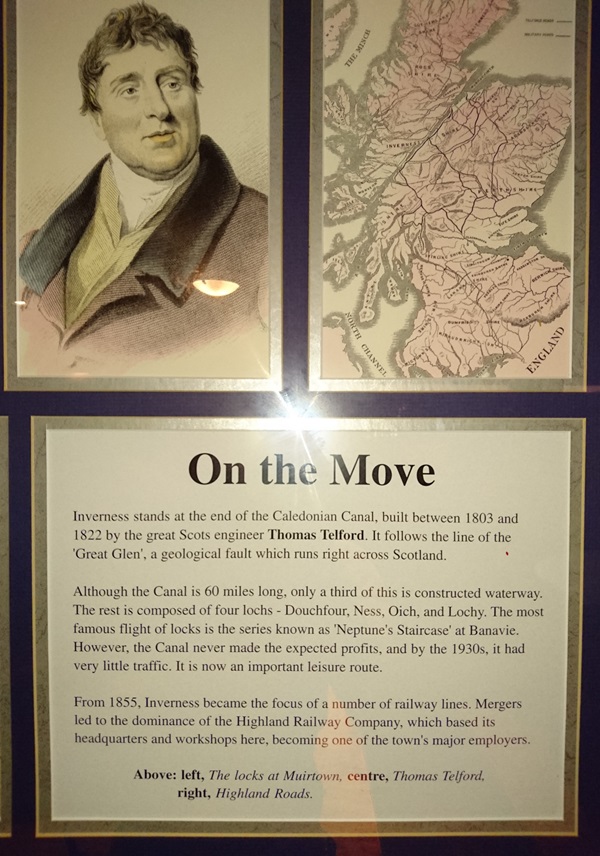
The text reads: Inverness stands at the end of the Caledonian Canal, built between 1803 and 1822 by the great Scots engineer Thomas Telford. It follows the line of the Great Glen, a geological fault which runs right across Scotland.
Although the canal is 60 miles long, only a third of this is constructed waterway. The rest is composed of four lochs – Douchfour, Ness, Oich and Lochy. The most famous flight of lochs is the series known as Neptune’s Staircase at Banavie. However, the canal never made the expected profits, and by the 1930s, it had very little traffic. It is now an important leisure route.
From 1855, Inverness became the focus of a number of railway lines. Mergers led to the dominance of the Highland Railway Company, which based its headquarters and workshops here, becoming one of the town’s major employers.
Above: left, The locks at Muritown, centre, Thomas Telford, right, Highland Roads.
An illustration of Inverness.
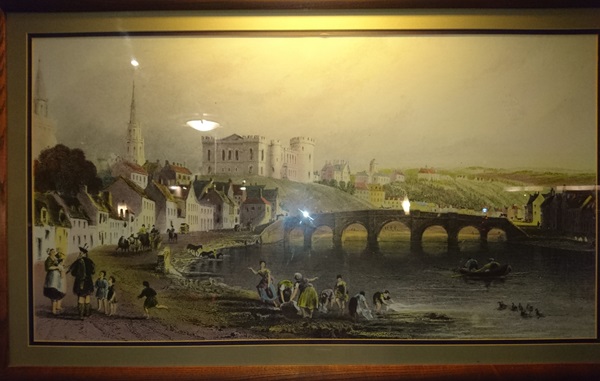
External photograph of the building – main entrance.
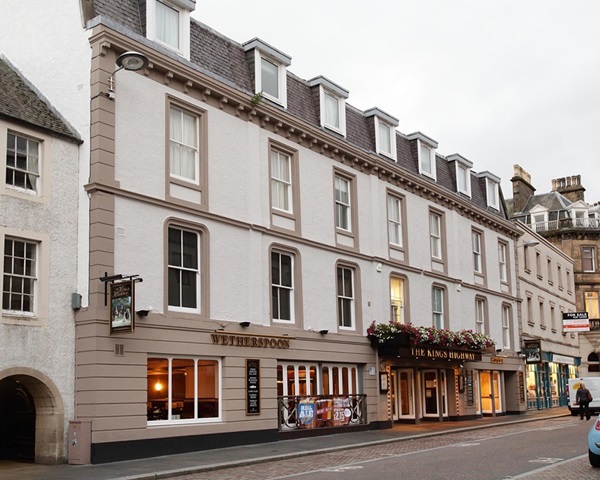
If you have information on the history of this pub, then we’d like you to share it with us. Please e-mail all information to: pubhistories@jdwetherspoon.co.uk